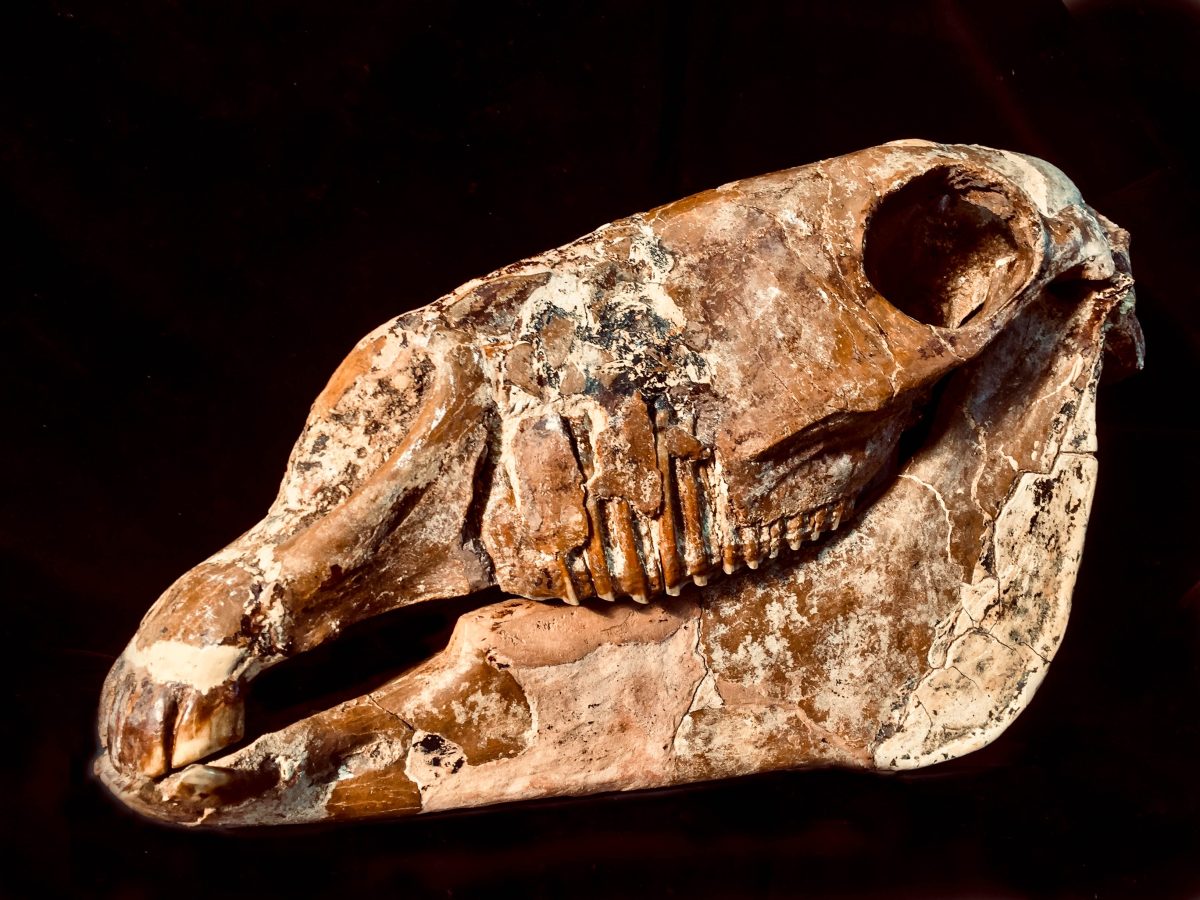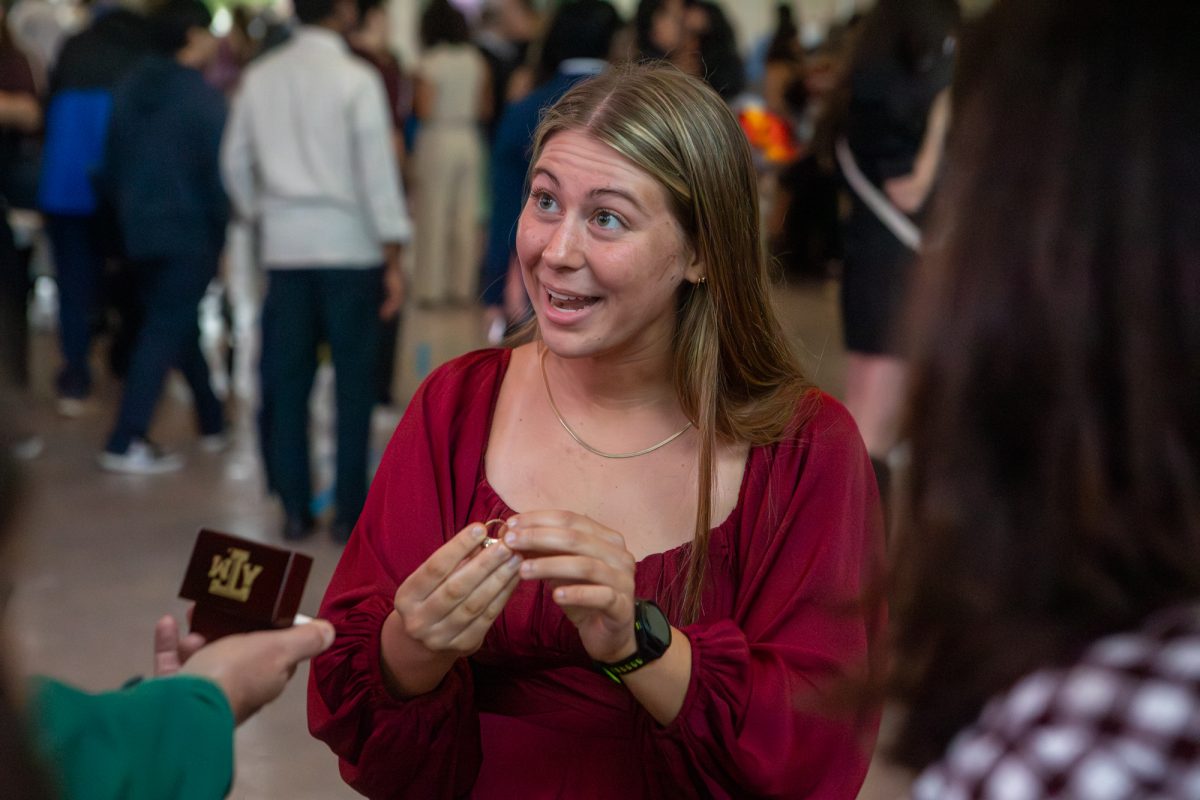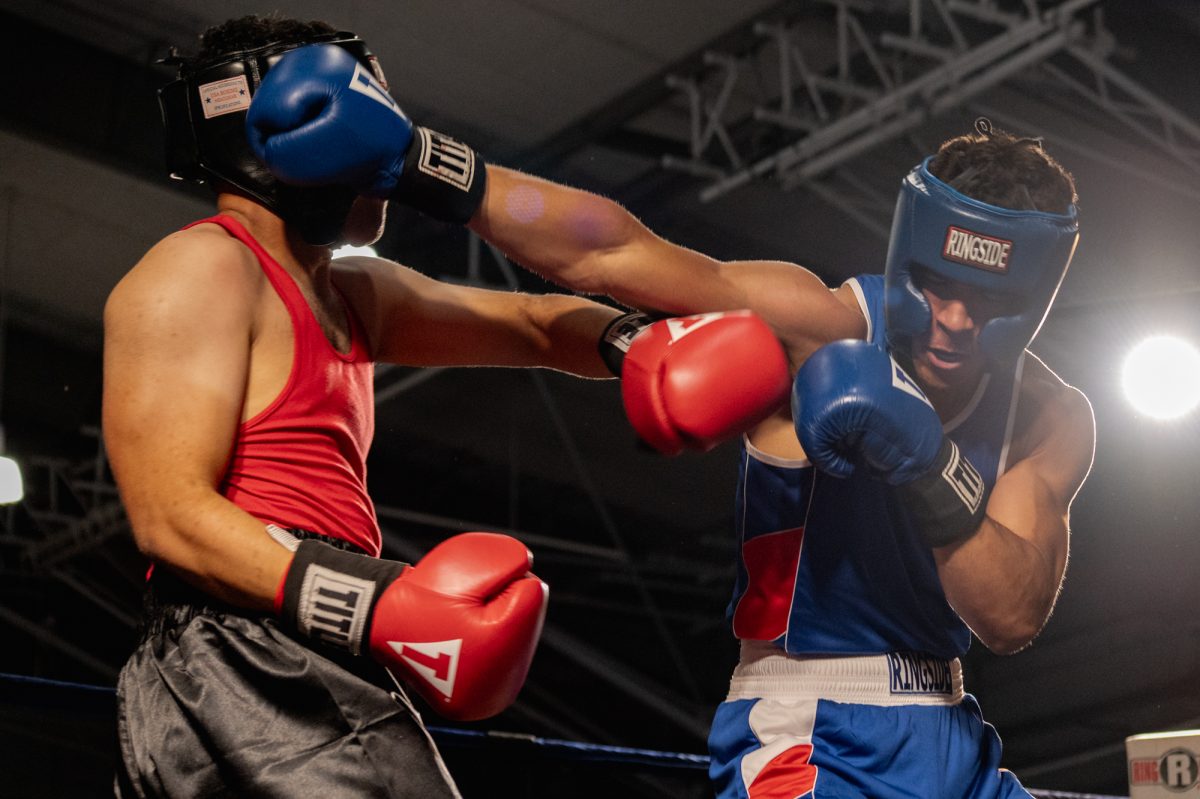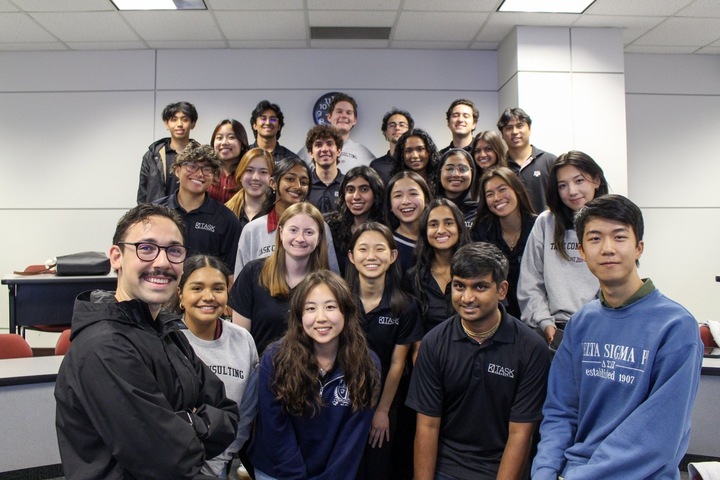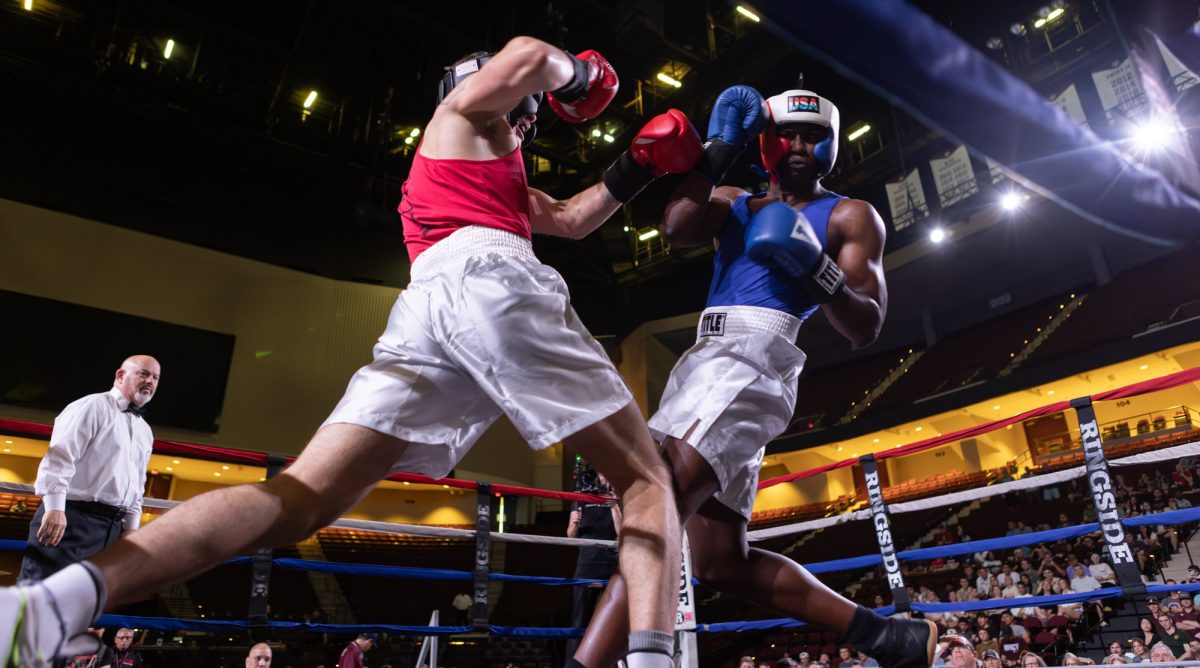In its latest in-house exhibit, the Brazos Valley Museum of Natural History (BVMNH) honors the life and work of Texas A&M’s first dean of veterinary science with “Fossil Fever: The Legacy of Mark Francis.”
A collection two years in the making, “Fossil Fever” showcases rarely-seen artifacts and historical images of the founding member of the Texas Veterinary Medical Association and “Father of the Texas Cattle Industry.” To reunite Francis’ long-separated artifacts, BVMNH partnered with the Texas Vertebrate Paleontology Collections and the Veterinary Collections of the A&M Medical Sciences Library.
BVMNH Executive Director Deborah Cowman said the journey to presenting “Fossil Fever” took a considerable amount of time because Francis’ story is unlike any other.
“It’s not the kind of thing you can look up on the internet and find anywhere,” Cowman said. “Our curator, Dr. Rebecca Ingraham, had to literally go back to original sources and pour through boxes of old files and letters and things that weren’t catalogued in Cushing. There was a lot of original scholarship that went into this exhibit.”
These sources document Francis’ earliest years on the farm in Shandon, Ohio, to his hiring as a professor and veterinarian at the newly-formed A&M College of Texas in 1888. While tenured at A&M, Francis garnered a lot of attention for his research and success in eradicating the tick-borne disease Texas Fever — which had devastated the Texas cattle industry for the latter half of the 19th century.
While Francis’ veterinary exploits are a highlight of the exhibit, they are not his only work on display. In addition to his work at A&M, Francis was a practicing amateur paleontologist with interest in Ice Age vertebrates, and he quickly amassed the collection on display today.
“Francis was a visionary,” Cowman said. “He recognized that at that time in Texas, nobody really cared about fossils. Places like Yale and places out east tried to talk him into just giving them some of the really important fossils that he found, but he didn’t because he felt they should remain in Texas because they were found there.”
Both mastodon and mammoth skull fossils from Francis’ collection are currently on display, as well as what Cowman considers the pièce de résistance of the exhibit — Equus francisci.
“One of the fossils that Francis had named after him was this Ice Age horse,” Cowman said. “The original is at the paleontology collections in Austin, and they won’t loan type specimens because they’re so valuable. Those are the specimens upon which all other specimens of that species are based, so we paid a substantial amount of money to have this cast made of its head.”
Following Francis’ death in 1936, his collection became the property of A&M and served as the foundation for the school’s first museum on campus in 1937. A series of tragedies stilted the progress of the A&M museum and eventually led to its closure in 1962, with the university shipping Francis’ collection to various paleontologists throughout Texas. For years after, some of the items remained unaccounted for. However, in 1975, while tearing down the original museum in preparation for the Langford Architecture Center, workers stumbled upon an unexpected discovery.
“At one point they had put some of the specimens in the old museum in a crawl space under the floor,” Cowman said. “When they disbanded the museum, nobody knew that they were there, and it wasn’t until the seventies when they were tearing down the building that they found in this crawl space all of those specimens. Many of those ended up coming to our museum.”
As the veterinary collections curator of the A&M Medical Sciences Library, Nancy Burford loaned the exhibit several government publications detailing Francis’ work on Texas Fever and veterinary equipment from his era. Burford said the opportunity to present Francis’ collection together again has been nothing short of amazing.
“I’m a librarian, and I am in the business of preserving the history of veterinary medicine,” Burford said. “If not for Mark Francis and the need for a veterinary school, we wouldn’t have a veterinary library over here on West Campus. Without Francis, we would not have this collection, and this collection is unique in the world.”
Museum’s latest honors little-known story of Mark Francis
September 5, 2019
Photo by Provided
Equus francisci was an Ice Age horse species named for A&M’s first dean of veterinary science, Mark Francis.
0
Donate to The Battalion
$2065
$5000
Contributed
Our Goal
Your donation will support the student journalists of Texas A&M University - College Station. Your contribution will allow us to purchase equipment and cover our annual website hosting costs, in addition to paying freelance staffers for their work, travel costs for coverage and more!
More to Discover




